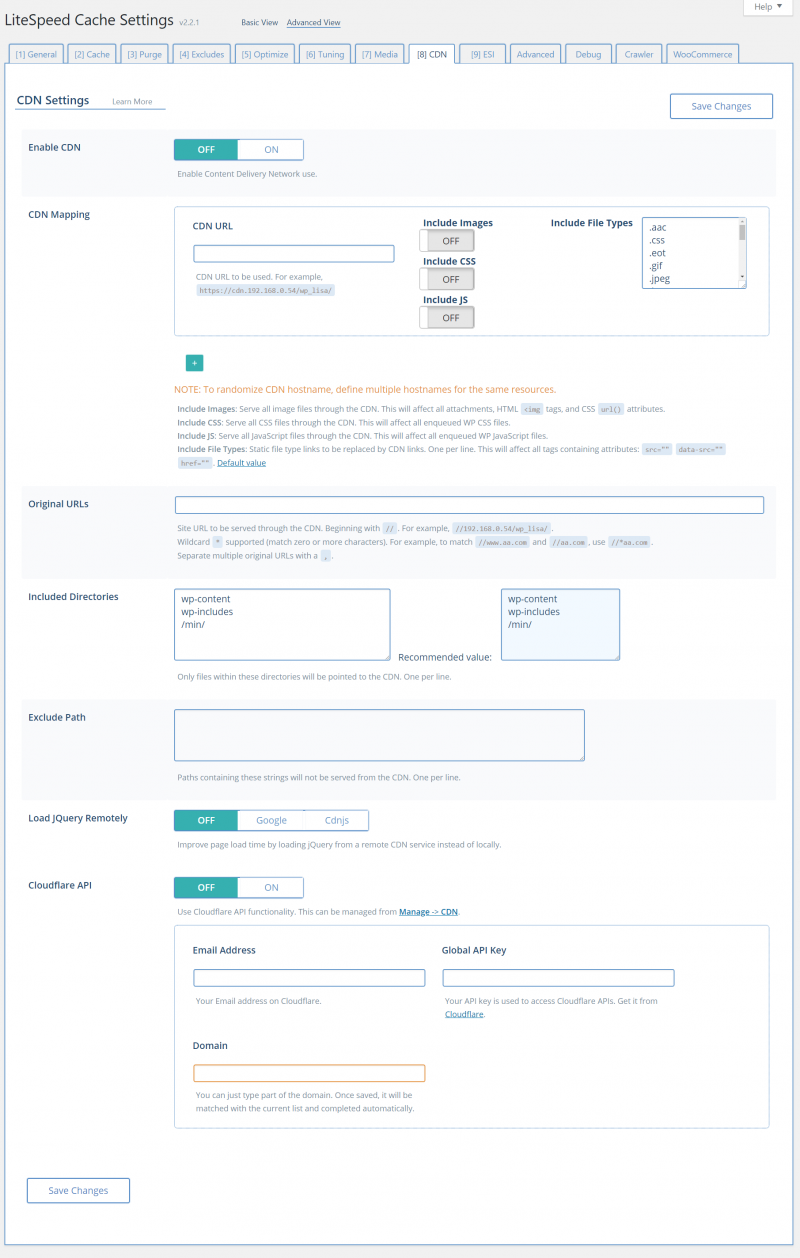This is an old revision of the document!
LiteSpeed Cache for WordPress Settings: CDN
If you currently use a content delivery network, you can configure LSCWP so that they work together.
NOTE: This setup is not necessary for Cloudflare or other distributed proxy networks. Only enable CDN support for reverse proxy content delivery networks! If you wish to manage your Cloudflare cache from within LSCache, skip most of this page and jump to the Cloudflare API setting.
Enable CDN
OFF
CDN support is disabled by default.
When CDN support is enabled, static file links are replaced by CDN links.
CDN Mapping
This section allows you to specify multiple CDN paths for your content. If you only use one CDN, then only fill out the first box. If you have more than one path (for example, images served from one CDN, and JavaScript/CSS served from another), then you would fill out a box for each path.
NOTE: If you set up multiple CDN paths with the same settings, the last one will overwrite the others.
CDN URL
empty string
This is the base URL for content that is served from this CDN. It should be a full URL beginning with http.
Include Images
OFF
Turn this on to serve all images through this CDN. This includes image attachments, HTML <img> tags, and CSS url() attributes.
Include CSS
OFF
Turn this on to serve all CSS files through this CDN.
Include JS
OFF
Turn this on to serve all JavaScript files through this CDN.
Include File Types
default file types
Use this spot to list, one per line, the file types that are to be served from this CDN. These should be static files. This setting affects all of the following HTML tags: src, date-src, and href. The default file types included in this setting are:
.aac .css .eot .gif .jpeg .js .jpg .less .mp3 .mp4 .ogg .otf .pdf .png .svg .ttf .woff
Important
If you have turned off any of the previous three settings, you will need to remove the corresponding file extensions from this Include File Types box.
For example, if Include CSS is set to OFF, then remove .css and .less from the list.
Original URLs
your site URL(s)
This setting defaults to your site's base URL. It shouldn't be necessary to change this. If you do change it, be sure that the URL begins with // as in //yoursite.com. You may use a wildcard (*) here to specify 0 or more characters.
If your site spans multiple base URLs, you may enter them all here, separated by commas. For example:
//a.yoursite.com, //b.yoursite.com, //c.yoursite.com
Included Directories
wp-content
wp-includes
/min/
These are the directories that will be served by CDN. You shouldn't need to change this unless you have a non-standard configuration.
Exclude Path
list of paths to exclude from CDN
Use this spot to list file paths that you explicitly do not want to have served from the CDN. List them one per line. You can list a path in its entirety, or use a partial path that will be matched. Do not use wildcards.
Load JQuery Remotely
Off
It can be faster to load JQuery from a remote CDN service. You may choose one here.
Cloudflare API
Off
Cloudflare isn't like other CDNs. You should not set Enable CDN to ON for Cloudflare. However, you can manage your Cloudflare cache through this plugin, if you wish. Simply set Cloudflare API to ON and then fill in the three fields below. Once the settings are saved, you will be able to manage your Cloudflare cache through the LiteSpeed Cache > Manage > CDN area.
Email Address
Enter the email address you use with your Cloudflare account.
Global API Key
Enter the API key you were given by Cloudflare. You can find it on your Cloudflare profile.
Domain
Enter the domain name served by Cloudflare. You needn't enter the entire domain here. If you enter only part of it, the remainder of the domain will be filled-in automatically after save.
